A Consumer Guide to the Trailing Edge: September, 2012
Recycled Goods (#100)
by Tom Hull
Normally I would have released an early August column even if it came up short, but seeing as how this is my 100th Recycled Goods guide, I felt something more substantial was called for -- certainly more than the half-dozen entries I had piled up by August 1. I get, and for that matter pursue, very few reissues these days -- not even much jazz, and the world music I tried to slip in is also way down. I've partly made up for that by consulting Rhapsody, but even when the records are available, there are a lot of things I'm reluctant to do, for lack of essential packaging documentation, and/or in the case of box sets lack of patience.
So what I wound up doing this month was to tackle my vast unrated file. Until lately that file listed about 750 records: things I have but hadn't got around to. Of that, slightly less than 200 records are in the incoming new jazz queue. Some of the other 550 are old LPs and newer promos -- mostly rock bands I had never heard of -- that I may never get to. But most of the 550 are in a handy shelf unit, and most of them were picked up real cheap when the last decent record stores here in Wichita went out of business. At the time I used to carry around a 20+ page printout of all the records I had heard about and would consider buying if I ran across them cheap enough. (For instance, it included all of the Penguin Guide 3.5- and 4-star records I didn't have.) As the closeouts approached $1 each a lot of records hit that threshold and I went into a feeding frenzy, buying hundreds of CDs, many so marginal I've yet to get to them. (This was back around 2002-04. Since then my threshold has moved: factors include a decade of struggling with storage problems, loss of income, lack of access to good used stores, plus the growing realization that I'm never going to get to it all.)
So what follows is a dive into my unrated file, salted with a few recent world music purchases (Karantamba, Souleyman, a Rough Guide). In early August I was so bummed by this that I athreatened to shelve the column after number 100. But I have a few more things in the queue, including a promise from Shanachie that I feel I have to honor. Plus, there's still a lot more in the rack.
One more point that bears repeating: Michael Tatum talked me into starting this column, edited it during its prime period when it was posted at Static Multimedia (even after he stopped working there), and has encouraged and helped me all along. This column, and the 3400 reviews to date, would not exist but for him.
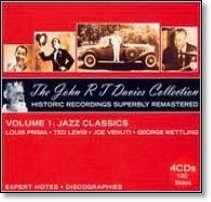 |
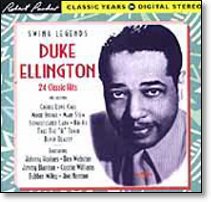 |
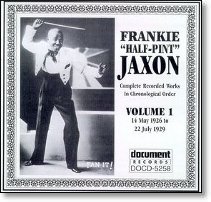 |
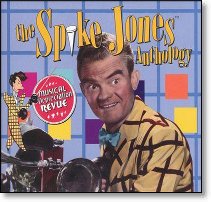 |
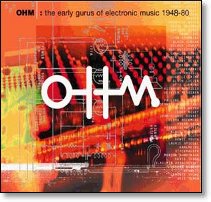 |
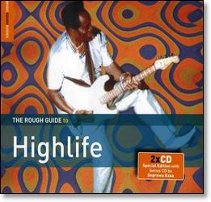 |
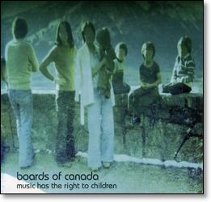 |
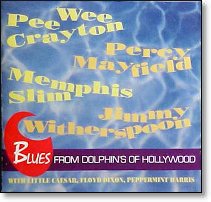 |
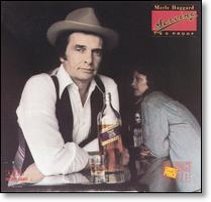 |
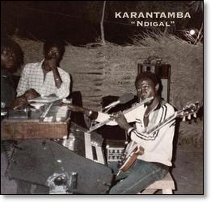 |
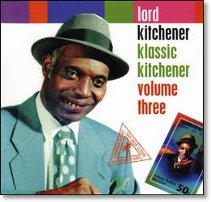 |
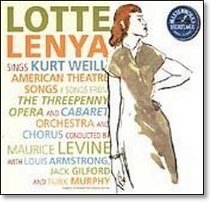 |
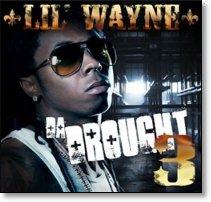 |
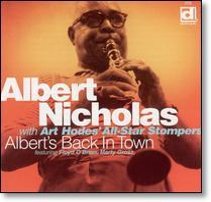 |
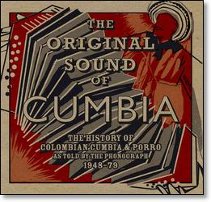 |
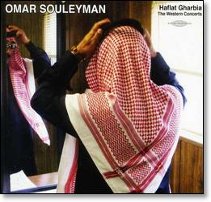 |
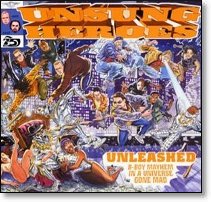 |
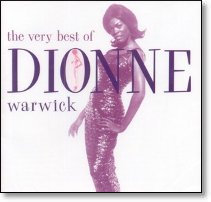 |
Svend Asmussen: The Extraordinary Life and Music of a Jazz Legend (1935-49 [2009], Shanachie): I don't think this CD was ever released: it showed up in the promo packet for a DVD with the same title, but the PR sheet explains that because the DVD was stuck with following the Danish fiddler's video trail, it's three hours of music missed much of Asmussen's best jazz. (Actually, the DVD covers says this was released on iTunes, which as a long-term Apple-phobe I wouldn't count.) Asmussen was born in 1916 in Denmark, plays violin, made an impression in the late 1930s, and at 96 is living in Florida, with a new album as recent as 2009. Light swing, lush violin, often with vibes, even Hawaiian guitar; about half with vocals (mostly Asmussen), neither here nore there. B+(***) [advance]
The John R T Davies Collection: Volume 1: Jazz Classics (1928-35 [2007], JSP, 4CD): One of England's most effective connoisseurs of early jazz and blues, Davies (1927-2004) had an exceptional talent at extracting and cleaning up the music from old pressings, a skill he used to build most of JSP's catalogue. The label likes to release 4-CD sets, so decided to memorialize Davies with this collection of odds and ends, roughly one disc each of four interesting figures. Needless to say, the sound is impeccable. The advertised "100 sides" come up a bit short, at 92. Still a huge bargain.
- Louis Prima (1934-35): Trumpet player, b. 1911 in New Orleans, later developed a comic shtick that took him to Las Vegas, but in the 1940s hit his peak with breathtaking r&b rave-ups; these are his first recordings, in New York with sharp bands that included George Brunies, Claude Thornhill, George Van Eps, and/or Pee Wee Russell; mostly blues, with Prima's vocals sounding like he's in blackface -- a little unsettling, but revealing. B+(**)
- Ted Lewis (1928-29): Clarinet player, b. Theodore Friedman in Circleville, OH in 1890, developed a talkie vocal style that cut against the melodramatic crooning that dominated the era, a bit like Bob Wills but center stage, an MC in the original sense, as Davies puts it, "a poseur, a strutter, a jazz hound, a showman"; his band seems more rooted in brass band yore than New Orleans, but occasional instrumentals like "Clarinet Marmalade" stand on their own. A-
- Joe Venuti (1928-30): Violinist, b. 1903, his early records are usually filed under guitarist Eddie Lang (1902-33, original name Salvatore Massaro), and Lang plays on 20 (of 24) tracks here; these tracks are credited to Joe Venuti and His New Yorkers, a changeable group including the Dorsey brothers, Jack Teagarden, Max Kaminsky, Bud Freeman, and various deservedly forgotten vocalists; the violin is certainly worth following. B+(**)
- George Wettling (1930-33): Drummer, b. 1907 in Kansas, moved to Chicago in 1921 and got the jazz bug, later on passing through the bands of Bunny Berigan, Artie Shaw, Red Norvo, and Eddie Condon; 8 cuts here were issued under Joe Venuti's name, the final ten a sextet he led with Jonah Jones on trumpet, Bud Freeman on tenor sax, Milt Hinton, George Barnes, and Dave Bowman -- the two horns there are often sublime, plus you get drum solos. B+(***)
Duke Ellington: Swing Legends: 24 Classic Hits [Robert Parker Classic Years in Digital Stereo] (1929-47 [2001], Nimbus): I hear that audiophiles hate reprocessed stereo, but I've never been picky or discerning enough to care, or maybe even to tell the difference. On the other hand, it's just possible that Parker (1936-2004) has done something different with his Jazz Classics in Digital Stereo and Classic Years in Digital Stereo series: I can't think of another version of "East St. Louis Toodle-oo" that has as much presence at this one here, and what I've heard thus far sounds fine to me. This is a 24-cut intro to Ellington's classic period, with a bit from the Bubber Miley era (4 cuts 1927-29), lots more from the Webster-Blanton (10 cuts from 1940 alone), barely enough to scratch the surface (the Classics label covers these years in 26 CDs), but everything here is essential and magnificent. Of course, I'd recommend that you dig deeper: A+ records include RCA's criminally out-of-print Early Ellington (Jazz Legends covers the same ground, and then some, in The Bubber Miley Era: 1924-1929) and the 1940-42 Never No Lament: The Blanton-Webster Band, but you also need to sample Ellington's small groups and at least hear the 1940 Fargo concert. This is merely a starter kit. A
Frankie "Half-Pint" Jaxon: Complete Recorded Works in Chronological Order, Volume 1 (1926-1929) (1926-29 [1994], Document): B. 1895 in Kansas City, a diminutive orphan, performed in vaudeville in his teens, sometimes as a female impersonator. He played piano, cut enough records to fill up three CDs, plus some after 1936 with Harlem Hamfats. Aside from his piano, not really a bluesman -- a snappy song-and-dance guy, a crack comic, a jive artist long before Cab Calloway and Slim Gaillard. Quite a bit of surface noise early on, but it gets better. Someone should compile a canonical single-disc best-of, but even here I can predict disappointment over the cuts. A-
Spike Jones: Musical Depreciation Revue: The Spike Jones Anthology (1942-59 [1994], Rhino, 2CD): As a musician, Jones perfected a rousing circus style augmented by whistles and gongs and other odd hard-to-describe sound effects. His singers, including Mel Blanc, were skit artists, sometimes murdering classics, more often skewering popular songs -- a favorite technique is to add context, explaining why "All I Want for Christmas (Is My Two Front Teeth" came about), with a few sui generis concoctions like "Wild Bill Hiccup" -- probably an update to a vaudeville parlay. The comedy is cheap, and dated, and this isn't something I'll feel like playing much in the future, but it's so unique (and frequently thrilling) I can't complain much. A-
Louis Jordan: Five Guys Named Moe (1943-45 [1993], Charly): A useless collection, with absolutely no documentation as to when these 20 cuts originated, and nothing on the internet to make up for the deficit, although the music is prime, and the titles don't intersect much with MCA's two essential Best Of volumes -- haven't checked against Proper's 4-CD Jivin' With Jordan, as good a place to start as any. Two songs are introduced as V Discs -- recordings Jordan and many others made for Armed Forces Radio during WWII, so that seems like a possibility, but adding to the confusion Charly released a second Jordan comp in 1993 explicitly based on the V Discs: Five Guys Named Moe (The V Discs) -- 14 cuts, all titles also here (hmm?). The same 14 cuts show up in Collectors' Choice's 1998 release of Jordan's V-Disc Recordings, so that seems to be that -- a reasonable guess is that this is the V Discs (1943-45) plus six more or less contemporaneous recordings, which would make it a bargain and a nice supplement to Jordan's jukebox hits. Still, unforvibable that they tell you none of that. B
Roland Kirk: Rahsaan: The Complete Mercury Recordings of Roland Kirk (1961-65 [1990], Mercury, 11CD): I bought this long ago but only recently cracked it open, giving it one quick pass -- ten hours (550:08) -- without bothering to break out the constituent albums (most out of print anyway). Aside from Kirk's Work (on Prestige), these are all of Kirk's early recordings, various studio and live groups, including an impressive set cut with Quincy Jones' big band. Some of it is brilliant, but much of it is widely scattered, including a lot of flute, some r&b vocals, and Kirk's famous three-horn gimmick, where he simultaneously plays tenor sax, strich, and manzello -- the latter two his inventions, although they are now well known if not exactly common. Much to study here, one of the most distinctive saxophonists ever, but the less studious (and less flush) may prefer to seek out the two constituent albums here that have generally remained in print: 1961's We Free Kings, and 1965's Rip, Rig & Panic -- two career peaks. B+(**)
OHM: The Early Gurus of Electronic Music, 1948-1980 (1937-82 [2000], Ellipsis Arts, 3CD): "If you're under ninety, chances are you've spent most of your life listening to electronic music," Brian Eno exaggerates in his foreword. Eno himself appears on the last song on the last disc, and chances are you haven't heard anything else here that preceded him -- well, maybe Jon Hassell, Steve Reich, Terry Riley; maybe even Raymond Scott, John Cage, or Olivier Messaien, but probably not his 1937 experiment that resulted in a shouting match between excited and appalled fans. As background music this is a veritable catalog of drones and beeps, sounds that have since become common in more beatwise music. Also doesn't help that most of these composers came out of the classical tradition, and some retained their preference for soprano divas -- I'd be happier had they stuck with the machines. Also, La Monte Young's long warble closing a second disc with more than its share of rough spots could drive you to hit eject. But the 96-page book is superb, the history both fascinating and important. Reminds me that I took a serious stab at this music back in the 1970s -- lots of familiar names here, and a few notables (like George Crumb and Charles Wuorinen) didn't even make the cut. A-
The Rough Guide to Highlife [2nd Edition] ([2012], World Music Network, 2CD): The bracketed notation is for you and me, signifying that this edition of the title has nothing in common with the label's out-of-print 2003 edition of the same title: not a problem, given how easy it is to pick out classics from Ghana and Nigeria in the 1970s. As usual, no dates, but the pre-Afrobeat Fela Kuti opener most likely dates from 1969, and the closer comes from Earthworks' superb 1981-84 Ghana compilation, The Guitar and Gun (not "the Gun"). Includes Seprewa Kasa's eponymous 2008 album as a bonus, worth having [previously rated B+(***) here]. A
Briefly Noted
Aesop Rock: Daylight (2001 [2002], Definitive Jux, EP): A nominal EP quick on the heels of the alt-rapper's second album -- seven tracks, six 4:16-5:40, the closer 24:32 on paper, but much of that is dead space; try as I can, most of the words slip past me as rhythmic rubble, but the near-instrumental "Forest Crunk" is remarkably seductive. B+(**)
Arthur Alexander: Lonely Just Like Me (1993, Elektra/Nonesuch): Mild-mannered soul singer -- he's usually defined as "country soul" -- had a string of singles 1962-77 with albums in 1962 and 1972, then vanished until this comeback effort, just months before he dropped dead; very much at ease here. B+(**)
Aphex Twin: Selected Ambient Works Volume II (1994, Sire, 2CD): Long skeins of unobtrusive dithering, repeating a sound until it vanished into the background, or undercutting the edges until they no longer stand out; I have my doubts that this is what we listen to music for, otherwise why even turn it on? B
Sidney Bechet: In Paris: Volume 1 (1953-64 [1995], Disques Vogue/RCA): A nice, attractive series of French reissues from the 1950s as American jazz stars washed up on the Left Banke; the Bechet is the exception, two suites with classical orch leaving him little room to improvise. C+
Blue Lu, Wee Bea & Baby Dee: Don't You Feel My Leg (1946-50 [1996], Delmark): "Apollo's Lady Blues Singers": nine cuts by Blue Lu Barker, five by Wee Bea Booze, four by Baby Dee, all devotees of a stripped down style, part tease, part trying to hold back and do what's proper. B+(***)
Boards of Canada: Music Has a Right to Children (1998, Matador/Warp): Duo from Scotland, Michael Sandison and Marcus Eoin, released four albums 1996-2005, this the best known; starts with a chilly ambiance, but moves in and makes itself comfortable, easy listening as engaging as you're up to. A-
Tiny Bradshaw: The EP Collection . . . Plus (1950-55 [1999], See for Miles): Singer (1907-58), played piano and drums, led bands from 1934 on, moving from swing into jump blues once he signed with King in 1948; had a hit with "Train Kept A-Rolin'" in 1951, and filled out this collection with an endless supply of Red Prysock sax jumps; the first half here really jumps, but the instrumentals that pad this out to 29 songs just fall into the groove. B+(**)
Cajun Vol. 1: Abbeville Breakdown (1929-39 [1990], Columbia): Early cajun recordings from the Columbia vaults, mostly Beaux Freres and the Alley Boys of Abbeville, neither major figures but they get the basic sound down, the washboard rhythm and rocking accordion and/or fiddle. B+(***)
Calypso Rose: Soca Diva (1993, Ice): McCartha Lewis, b. 1940, first woman to win the calypso prize in 1978, with most of her records (on Straker's) 1984-91; don't know whether these are new songs (they do have new copyright dates), new recordings, or what, but the beat is infectious, and when she tees off on Chris Columbus she dings up her target pretty bad. B+(**)
Clifton Chenier: Bayou Blues (1955 [1970], Specialty): The "King of Zydeco" from the mid-1950s until his death in 1987, or as the back cover puts it, "King of the South"; plays accordion, adding a Cajun lilt and a bit of French accent to time-tested blues riffs; this early record is typical, one could even say classic. B+(***)
June Christy: The Misty Miss Christy (1955 [1992], Capitol): One of Stan Kenton's singers, emerging as the definitive voice of cool in the 1950s; one of her key works, her voice as authoritative as ever, but Pete Rugolo's strings were never much of a strong point. B+(**)
Guy Clark: Dublin Blues (1995, Elektra/Asylum): Texas singer-songwriter, has dropped an easy-going, homespun album every couple years since 1975's Old No. 1; one of the better ones, citing Hank Williams, recycling the tale of "The Randall Knife." B+(***)
Leonard Cohen: New Skin for Old Ceremony (1974, Columbia): A still young man sounding old and jaded, a role he ever more grew into, leaving this album -- which must have sounded daring, risqué, even shocking at the time -- unfinished, a sketchpad of incomplete ideas. B+(**)
Steve Coleman/Robin Eubanks/Greg Osby/Cassandra Wilson: Flashback on M-Base (1985-90 [1993], JMT): The one M-Base record is attributed to the Collective, but this second package of archival material falls back to the Collective's most prominent figures; the idea was funk-jazz fusion, which this achieves more often than not; the nots are tripped up in Wilson's arty vocals. B+(*)
Bootsy Collins: Glory B Da Funk's on Me: The Bootsy Collins Anthology (1976-82 [2001], Warner Archives/Rhino, 2CD): Bass player, worked with James Brown and George Clinton and had a huge impact on both, while running Bootsy's Rubber Band as a side project of Clinton's Parliament-Funkadelic franchises; I was blown away by his first two albums, less impressed by the next four, which all figure into this compilation; better to search out the later single Back in the Day: The Best of Bootsy, or the first two (which loom larger in the single); packaging is a little strange here. B+(**)
Elizabeth Cotten: Live! (1983 [1998], Arhoolie): Folksinger, her main claim to fame a couple albums recorded in the late 1950s for Folkways, but you can add this live set from when she was close to 90, picking her guitar and talking her way around the songs. B+(***)
Don Covay: Checkin' In With Don Covay (1973-74 [1994], Mercury): Minor soul singer, released nine albums 1965-77, two of which are excerpted here (Superdude and Hot Blood), no idea how representative they were, but they sound like he was attempting a mid-career adjustment toward funk, and hadn't got the hang of it yet. He more assured with old-fashioned adultery-murder ballads like "There's Something on My Mind." B
Pee Wee Crayton/Percy Mayfield/Memphis Slim/Jimmy Witherspoon: Blues From Dolphin's of Hollywood (1953-55 [1991], Specialty): Nine cuts from Crayton; three, four, and four from the others, plus two each from Little Caesar ("You Can't Bring Me Down" a choice cut), Floyd Dixon, and Peppermint Harris; only Mayfield has a better comp, and sandwiching the blues shouter Witherspoon between the pianists (Slim's "Pete's Boogie" is another choice cut) serves him right. A-
Cymande: Promised Heights (1974 [2007], Newhouse): British funk crew with a Jamaican connection, their first something of a cult album, but this is their third, which rolls along pleasantly, with nothing really standing out, except maybe the rastafari nod. B
Craig David: Born to Do It (2001, Wildstar/Atlantic): Brit soul singer, father from Grenada, maternal grandfather orthodox Jewish; first album, sold well; languid beats, not too slick, an mix of things. B+(**)
Craig David: Slicker Than Your Average (2002, Wildstar/Atlantic): Spawned four top-10 UK hits, not that I can pick them out, let alone tell you why; maybe slicker, but still eclectic, the rough spots more intriguing, but the effect minor any way you slice it. B+(**)
DJ Logic: The Anomaly (2001, Ropeadope): Jason Kibler's third album, electrobeats and turntable squiggles with a few raps and some jazz dressing; he veered further into jazztronica on Matthew Shipp's Blue Series, and teamed with Vernon Reid for two fine Yohimbe Brothers records; the rough roots of his career are all here, rough. B+(**)
Early Mandolin Classics (1927-34 [1989], Rounder): Sixteen cuts, starting with the Dallas String Band playing "Hokum Blues," with more hokum to follow than bluegrass, although the best known name among these obscurities is Gid Tanner's Skillet Lickers, playing a rag -- most intriguing name is King David Jug Band. B+(***)
The Firesign Theatre: Shoes for Industry! The Best of the Firesign Theatre (1967-75 [1993], Columbia/Legacy, 2CD): The main difference between Christgau and myself is that he can discern the subtlest innuendo of lyrics in real time, whereas for me every rhyme sounds like "Louie Louie"; he thinks this is remarkably funny, but all I hear is disconnected background noise -- I don't recall laughing once, but I can tell you that the satire about wars in general and the war on drugs in particular is sadly undated. B
Dick Gaughan: Handful of Earth (1981, Green Linnet): Scottish folk singer, 18 albums since 1972, this the top-rated one at AMG; heavy accent, thick guitar, slow laments, some I take for class consciousness, but that may be sheer stubbornness. B+(**)
Genius/GZA: Liquid Swords (1995, Geffen): One of the first solo albums to drop out of the Wu-Tang collective, wrapping some Samurai shit around gangsta business -- sounds smarter when you rap about it than when you do it, but either way the fatalism gives you up in the end. B+(***)
Merle Haggard: Serving 190 Proof (1979, MCA): It would be fun to go back and sort through Hag's early records one-by-one, but having been introduced to him through comps, the first thing that strikes me here is finding the source of two familiar classics -- "Red Bandana" and "My Own Kind of Hat"; the old records are all short (34:32 here), but the nine other songs -- seven by Haggard, the other two the most pre-fab -- are substantial, even if the weariness of turning 41 turned out to be short-sighted. A-
Merle Haggard: The Peer Sessions (1996-99 [2002], Audium): A dozen covers, limited to songs published by Ralph Peer, but that includes a fair helping of country classics: Jimmie Rodgers, Jimmie Davis, W. Lee O'Daniel, Tommy Duncan, Floyd Tillman; he's a fine interpreter, especially of Rodgers (whom he had a head start on: cf. his 1969 album, Same Train, Different Time). B+(**)
Al Haig: Al Haig Today! (1965 [1991], Fresh Sound): An important bebop pianist, especially in the early 1950s, knocked out this trio with Ed DeHass on bass and Jim Kappes on drums; one original, the rest standards, the melodies nicely laid out, nothing fancy piled on top. B+(*)
Roscoe Holcomb: The High Lonesome Sound (1961-74 [1998], Smithsonian/Folkways): Kentucky coal miner, died of emphysema at age 68, cut two CDs worth of falsetto moan over banjo for folk purists, sounding much older and more ragged than his years; his "House of New Orleans" has never been done uglier, but he finds a form of serenity by the end, if you can stand the sameness. B+(*)
Industrial Strength Machine Music: The Framework of Industrial Rock 1978-1995 (1978-95 [1999], Rhino): Hard synth percussion, mechanical repetition, not much for vocals, least of all for anything that might humanize the aesthetic; starts with Throbbing Gristle and Cabaret Voltaire, passing through Einsturzende Neubauten, Ministry, Revolting Cocks, winding down with Nine Inch Nails; tries to keep an even keel, underplaying the noise potential, clogging along. B+(**)
D.D. Jackson: Anthem (2000, RCA): Canadian pianist, protégé of Don Pullen, had some early 1990s albums with David Murray, wound up briefly on a major label which culminated in this kitchen sink production; some moments, including James Carter's two spots but also some piano, are brilliant, but there are also vocals, faux classical and faux Africanism, stuff I can't even characterize close enough to insult. B
Herb Jeffries: Say It Isn't So (1957 [2001], Bethlehem): A matinee-idol crooner, most famous for his brief (1940-42) tenure with Duke Ellington, never the best judge of vocal talent; Russ Garcia's strings try to play to Jeffries' strengths, a marble-like stature and a sense that time stretches to infinity. B-
Tom Johnson/Eberhard Blum: Rational Melodies (1993, Hat Art): Johnson wrote for the Village Voice about "new music" from 1972-82, and toward the end was composing some of his own; his "Rational Melodies" dates from 1982 and has been recorded several times, here by flautist Blum; even hard-core flutophobes should give this a chance, the instrument's tell-tale timber melting away when faced with such logic. B+(***)
George Jones: And Along Came Jones (1991, MCA): Wrote one song, with Ray Price so it doesn't seem that fresh, title is "You Done Me Wrong," which pretty much sums up his aesthetic, even though in real life he was plenty culpable too; the other songs are pro forma, but any time he wants he can throw his voice around to make them special. B+(**)
George Jones: I Lived to Tell It All (1996, MCA): All turns out to mean drinking songs. Probably healthier to sing them than to live them. B+(*)
George Jones & Tammy Wynette: Together Again: The Encore Collection (1972-85 [1999], BMG Special Products): False advertising: they're only together in the cover picture, where both look like they have better places to be; starts with four Jones songs -- good to hear his slapdash "Nothing Ever Hurt Me (Half as Bad)" -- five from Wynette (wouldn't you love to hear Jones harmonize on "D.I.V.O.R.C.E."?) then Jones gets the last word in: "Who's Gonna Fill Their Shoes" -- a problem neither has ever had a problem with (actually, it's about deeper concerns: Elvis, Hank, and Lefty). C
Kansas City Hot Jazz [Robert Parker's Jazz Classics in Digital Stereo] (1926-30 [1990], ABC): Early, the formative years of Kansas City's reputation as the home of the territory bands, the 18 cuts mostly divided between Bennie Moten (11 cuts) and Andy Kirk (4), with Walter Page, Hattie North, and George E. Lee garnering one cut each -- Count Basie appears only on the last of the Moten cuts; transitional, not as hot as other contemporaries, not quite ready to swing -- Basie changed that, but he becomes a much larger figure in Moten's 1931-32 band. B+(**)
Karantamba: Ndigal (1984 [2012], Teranga Beat): Cut in Senegal and previously unreleased, featuring Gambian guitarist Bai Janha who also led the group Guelewar, a jumble of everything from mbalax to afrobeat, the guitar and vocals central, but it's the drums that grab you. A-
Lotte Lenya: Lenya Sings Weill: The American Theatre Songs (1955-66 [1999], Sony Classical): German actress-singer (1898-1981), married to composer Kurt Weill, divorced, then reunited in New York as exiles from the Third Reich; with her clear voice and accent, she always had an edge in singing Weill's songs, and nothing holds her back here, not even Maurice Levine's orchestra; ends with several takes leading up to Louis Armstrong's hit version of "Mack the Knife." A-
Lil Wayne: The Drought Is Over 2: The Carter 3 Sessions (2007, Mixtrap): Superstar rapper, currently has 10 studio albums, 25 free mixtapes; I bought a CDR of this during the first flush of interest in his mixtapes, packed it for travel, never figured it out; the repeating theme is something about "the empire strikes back," punctuating a wide range of pieces including a memorable sample from the Beatles' "help"; a cornucopia of rich rips and dubious philosophizing, not much sticking in your mind. B+(***)
Lil Wayne: Da Drought 3 (2007, mixtrap, 2CD): More like Da Deluge, some in response to Katrina, but most because with the relaxed rules governing mixtapes he just lets it all flow. A-
Lord Kitchener: Klassic Kitchener: Volume Three (1970-91 [1994], Ice): Aldwyn Roberts (1922-2000) emerged as a major calypso singer during his UK period (1948-62), rivaled Mighty Sparrow for dominance of calypso competitions in the 1960s and 1970s; of Ice's three volumes of Kitchener hits, the first is essential, the second dispensible, and the third, mostly drawn from the 1970s, splits the difference. A-
Nellie Lutcher: The Best of Nellie Lutcher (1947-51 [1995], Capitol): R&B singer from Louisiana, accompanied herself on piano, had a few marginal hits -- "Fine Brown Frame" is especially indelible. b+(**)
J.E. Mainer & the Mountaineers: 18 Gospel Favorites (1967-69 [1998], Rural Rhythm): North Carolina string band with Mainer (fiddle) and Morris Herbert (banjo) sharing vocals, backed by guitar, dobro, bass, and washboard; they date back to the 1930s, and we're assured they play these songs just like they did back then, but they seem to originate on albums Mainer cut for the label just before his death in 1971 (possible some of these are earlier: Rural Rhythm released twenty LPs of The Legendary J.E. Mainer and His Mountaineers in the late '60s, but only one lineup is listed here, so that must tighten the range); some familiar tunes, most obscure, his "Log Cabin in the Lane" too sprightly to be credible, but fine nonetheless. B+(**)
Marley Marl: The Best of Cold Chillin': In Control Vols. I + II (1988-91 [2002], Landspeed, 2CD): Producer, in control of a pair of records that are rarely captured by their featured artists -- Roxanne Shanté's "Wack It" is one exception; old school beats, and a few old school boasts, continuous flow, the second volume doubling the song count, trying to substitute quantity for the quality drop. B+(**)
Mighty Spoiler: Unspoilt (1953-60 [1995], Ice): Another 1950s calypso champion, Theophilus Philip (1926-60), made his first mark in 1946 but it's not clear from the microscopic type in the booklet that anything here predates "Bedbug"; more vintage calypso, with with steel pans. B+(**)
Garnet Mimms: Cry Baby: The Best of Garnet Mimms (1963-66 [1993], EMI): R&B singer from Philadelphia, had a hit in 1963 with "Cry Baby" -- later made even more famous by Janis Joplin -- and a couple more modest hits, is career petering out in the 1970s; 25 songs is more than you need, with few jumping out of the pack -- "A Little Bit of Soap" is one. B+(**)
The Minutemen: Post-Mersh, Vol. 2: Buzz or How Under the Influence of Heat/Project Mersh (1983-85 [1987], SST): Two EPs, one before and one after the group's landmark Double Nickels on the Dime, the before unmersh enough to include a song called "Dreams Are Free, Motherfucker," the mersh experiment featuring a cover ("Hey Lawdy Mama"), but the mersh move got much better on the following album, 3-Way Tie (For Last). B+(**)
Willie Mitchell: Soul Serenade: The Best of Willie Mitchell (1964-74 [1999], Capitol): Best known as Al Green's producer, but played trumpet, cut more than a dozen instrumental albums 1963-71, plus a couple later on -- mild-mannered funk, aimed at Booker T., but most fell short. B
Modern Vocal Groups, Volume 3 (1949-55 [2000], Ace): Collectorama, part of four volumes mopping up all the doo-wop on the Modern, Flair, and RPM labels -- the Cadets, the Chimes, the Flairs, the Ebonaires, Richard Berry, Arthur Lee Maye, Shirley Gunter, Etta James -- the latter the only one I've ever heard of; the basic sound is so vital, it takes a while to sink in why all this remains so obscure -- just not very good. B
Modern Vocal Groups, Volume 4 (1954-56 [2000], Ace): Again, more obscurities, no hidden gems, even from B.B. King, except the two songs you might recall: The Cadets' "Stranded in the Jungle" (or you may just know it from the New York Dolls), and Jesse Belvin's magnificent "Goodnight My Love." B+(*)
MTV's AMP (1996-97 [1997], Caroline): Can't say what (if anything) the brand name tie-in means, but this slice of then-contemporary electro-dance music is earnestly industrial, as machine-friendly as can be, without the menace of its industrial precursors, at least menace you should take seriously; Chemical Brothers, Aphex Twin, Photek, Future Sound of London, Underworld, Prodigy, Goldie, The Crystal Method, Atari Teenage Riot, like that. B+(**)
My Rough and Rowdy Ways, Vol. 1 (1920s-30s [1998], Yazoo): "Early American Rural Music, Badman Ballads and Hellraising Songs" -- more bad men than anything else, some as well known as Dave Macon and Ernest Stoneman, Doc Boggs and Clarence Ashley and Peg Leg Howell, most faint blips. B+(**)
Albert Nicholas: Albert's Back in Town (1959 [2001], Delmark): Sparsely documented New Orleans clarinetist (1900-73), played for King Oliver 1925-27, with Luis Russell, Jelly Roll Morton, Mezz Mezrow, and here on a visit to Chicago with Art Hodes' All-Star Stompers, including Floyd O'Brien on trombone, Mike Wallbridge on tuba, and a young Marty Grosz on guitar; superb trad jazz, especially the clarinet. A-
Nigeria Afrobeat Special: The New Explosive Sound in 1970s Nigeria (1970s [2010], Soundway): Leads off with Fela Kuti, the first out to master the synthesis of James Brown funk with uptempo highlife; follows up with enough scattered names to make a movement, not that anyone else quite pulled it off. B+(**)
Sinéad O'Connor: So Far: The Best of Sinéad O'Connor (1986-97 [1997], Capitol): Irish heretic, like many singer-songwriters she borrows liberally on the folk tunes; nothing here has the feel of a hit, excepting the Prince cover; vain enough to insist that her premature best-of is only the beginning, but 15 years later I don't know how you'd go about improving on it. B+(**)
The Original Sound of Cumbia (1948-79 [2012], Soundway, 2CD): I have half a dozen Colombian cumbia compilations, and this one on paper is the most vintage, with relatively crude instrumentation and sound, relentless upbeat, and frequent shout outs to their idiom, winds up sounding the most classic. A
Other Dimensions in Music Special Quintet w/Matthew Shipp: Time Is of the Essence Is Beyond Time (1997 [1999], AUM Fidelity): William Parker group, predecessor to his Quartet, with two horns -- Roy Campbell trumpet, Daniel Carter sax -- spinning free, Rashid Bakr on drums; normally pianoless, but here add Matthew Shipp, knocking them around a bit rather than pulling them together. B
Hot Lips Page: An Introduction to Hot Lips Page: His Best Recordings 1929-1945 (1929-45 [1997], Best of Jazz): Given name Oran Thaddeus Page (1908-54), played trumpet with Walter Page's Blue Devils and sang in his own 1938-40 small swing groups, good for 12 of 22 cuts here; the rest come from bands Page joined, with singers like Jimmy Rushing and Billie Holiday, leaders like Chu Berry, Artie Shaw, Pete Johnson, Albert Ammons, and Sidney Bechet. B+(***)
Procol Harum: The Best of Procol Harum (1967-72 [1973], A&M): English boogie band, had one remarkable hit, a prog fluke ("A Whiter Shade of Pale") they never came close to duplicating (OK, "Conquistador"), which left them without a practical identity. B
Rock 'n' Roll Party: Volume 1 The Early '50's (1947-56 [1989], RCA): Compiled by Billy Vera, who has an ear for this stuff, also an eye for obscurities -- so while RCA's vaults could have yielded more recognizable names than Jazz Gillum, the Robins, and the Five Keys, he was probably just as happy chasing down the Billy Bunns and Mr. Sad Heads; Bunn's "That's When Your Heartaches Begin" is a find, even more than the party music, which had yet to trickle down to the teens. B+(**)
Roy Rogers: Country Music Hall of Fame Series (1937-42 [1992], MCA): B. Leonard Slye in Cincinnati in 1911, moved to California and remade himself as a singing cowboy, first in Sons of the Pioneers, later in numerous movies and television shows: an ubiquitous figure for many years, soon forgotten, not least because his huge repertoire of expertly sung music has worn so thin. B+(*)
Raymond Scott: The Music of Raymond Scott: Reckless Nights and Turkish Twilights (1937-40 [1992], Columbia/Legacy): Composer, inventor, pianist, "the man who made cartoons swing, as the liner notes subhed puts it"; this documents his quintet, when he emerged from the shadows to score some hits; clever, to tightly arranged to really swing. B+(***)
Solesides' Greatest Bumps (1992-97 [2000], Quannum Projects, 2CD): Bay Area hip-hop label comp; not sure how much of this came off their primo records -- roster includes DJ Shadow, Blackalicious (Gift of Gab), Latyrx (Lateef the Truthspeaker, Lyrics Born), Mack B. Dog -- aside from Latyrx the Album the catalog links point to EPs/singles, and only Blackalicious consistently brings their A-game. B+(***)
Omar Souleyman: Haflat Gharbia: The Western Concerts (2009-11 [2011], Sublime Frequencies): Fourth album on his eclectic collector label, the first two indecisively labeled "folk and pop" with the side story that he's a wedding singer, but these cuts were recorded far away from Syria, blazing speed with minimal variations; hope he stayed out. A-
Speckled Red: The Dirty Dozens (1955-57 [1996], Delmark): Rufus Perryman (1892-1973), older brother of Willie Perryman (aka Piano Red), their nicknames alluding to their status as albinos, both boogie woogie pianists of note; one interview cut which could, if anything, go longer; three versions of his signature "Dirty Dozens," one "Dirtier" and another "Dirtiest" -- I take him at his word, but too bad I don't have a crib sheet. B+(***)
Spring Heel Jack: Oddities (2000, Thirsty Ear): Brit drum 'n' bass duo, John Coxon and Ashley Wales, released a couple of bright pop albums before they developed a relationship with this label and revealed themselves to be big AMM fans; the label gave them this chance to indulge their incoherent side, and they took advantage. B-
Ralph Stanley: Saturday Night (1992, Freeland): The prelude to Sunday Morning, the yin and yang of country music, except that true to his high-and-lonesome bluegrass roots, Stanley isn't much up for fun on Satruday night; he lists a stellar array of duet guests, but first time through I can't say as I noticed anyone but him. B+(*)
Buddy Tate with Humphrey Lyttelton: Swinging Scorpio (1974 [2003], Black Lion): One of the legendary Texas tenors, always at home on a blues with a swing rhythm, and England's premier trad jazz trumpeter; probably would have been better had they excluded the extra horns, which encouraged them to slide into an easy groove and stay there. B+(**)
The 2 Tone Collection: A Checkered Past (1979-86 [1993], Chrystalis, 2CD): A label retrospective from the UK home of ska groups the Special A.K.A., the Selecter, Madness, but nothing from the English Beat, who show up on the label's highly regarded 1983 This Are Two Tone; this collection of singles, live shots, outtakes, and similar trivia has a few choice moments, but they're pretty checkered. B
Unsung Heroes: Unleashed (2000, 75 Ark): Quickly forgotten, a one-shot underground rap effort -- evidently some UK, some US; don't know who was involved or whatever came of them -- but it sticks to the basic vibe, many voices working over basic samples; subtitle: "B-Boy Mayhem in a Universe Gone Mad" -- one can do a lot with that theme. A-
The Waitresses: King Biscuit Flower Hour (1982 [1997], King Biscuit): Chris Butler's female-voiced group, a live radio shot between their first and second (last) albums, released well after the fact, but shortly after singer Patty Donahue died, age 40, lung cancer; sloppy, loud, not as clever as the album but vibrant, something you appreciate more after a death. B+(*)
Tom Waits: Used Songs (1973-1980) (1973-80 [2001], Elektra/Rhino): His breakthrough came in 1993 with Swordfishtrombones, where he found an appropriate sound for the down-and-out songs he'd been crafting for a decade; these are those songs, selected with an eye toward his future, easy to do now that future has slipped into the past. B+(**)
Tom Waits: Alice (2002, Anti-): Released same day as Blood Money, and therefore joined at the hip, it is pure luck that I've heard this one and not its mate (generally regarded as the better album); this is characteristically creaky, old songs roughly done, his down-and-out mode as counterculture. B+(***)
The Wandering Eyes: Songs of Forbidden Love (1998, Lazy Sob): Dedicated to Mel Street, all cheating songs all the time, so relentless it comes close to establishing a new normal; singers include Rosie Flores, Dale Watson, and Kelly Willis, and pickers come and go as often as partners. B+(**)
Dionne Warwick: The Very Best of Dionne Warwick (1962-74 [2000], Rhino): Burt Bacharach and Hal David wrote fourteen of these sixteen songs, enough to cast her as a girl group tool, but she gave the writers what little cool they ever enjoyed -- not that she actually was cool. Before Black Power she was as prim and proper as a black diva needed to be, a strange mix of empowerment and rot, a whiff of which is never far below the surface. A-
Dick Wellstood: Live at the Sticky Wicket (1986 [1997], Arbors, 2CD): A fine, old-fashioned pianist, working solo in a bar, playing rags and swing and even a little bebop (e.g., "Giant Steps" as a rag), negotiating the tunes as he goes along; released ten years after his death, this is meant as a remembrance, so nothing is left out, which seems about right. B+(***)
Neil Young: Road Rock, V. 1 (2000, Reprise): Live tour quickie, don't expect we'll be seeing a V. 2 any time soon; cover promises "Friends & Relatives"; credits include Spooner Oldham, Duck Dunn, Jim Keltner, Astrid and Pegi Young (backing vocals), and Chrissie Hynde joins in for a Dylan closer; the 18-minute opener establishes the guitar sound, and two others stretch out past 10 minutes. B+(**)
Legend: B+ records are divided into three levels, where more * is better. [R] indicates record was reviewed using a stream from Rhapsody ([X] is some other identified stream source; otherwise assume a CD). The biggest caveat there is that the packaging and documentation hasn't been inspected or considered, and documentation is especially important for reissues. But also my exposure to streamed records is briefer and more limited, so I'm more prone to snap judgments -- although that's always a risk.
For this column and the previous 99, see the archive. Total records reviewed: 3407 (2992 + 415).
Additional Consumer News
Copyright © 2012 Tom Hull.